If you’ve ever taken a basic art class, you probably learned a little bit about point perspective. That refers to different ways to render a two-dimensional image of a three-dimensional space.
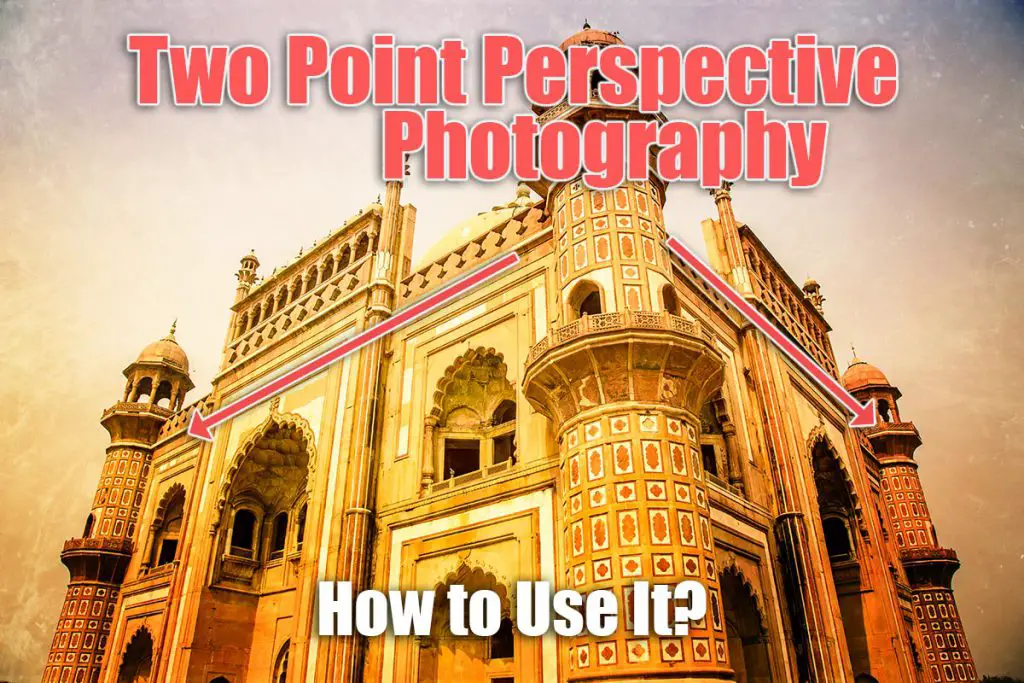
What Is Point Perspective in Photography?
In point perspective, the illusion of depth comes from parallel lines appearing to converge at a distant point on the horizon, called the vanishing point. The number of vanishing points gives you the name, so Two Point Perspective uses two vanishing points.
To think about how point perspective works, imagine standing in front of a pane of glass. If you were to trace exactly what you saw, your drawing would show a different view based both on the scene and the position of the window.
More distant objects appear smaller, and both the decreasing size and converging lines would show the depth of the scene.
What Is Two Point Perspective Photography?
If you were to move the glass pane to a different angle on the same scene, the perspective would shift based on where you moved it to. That angle, along with what was in front of you, would dictate how many vanishing points there are.
If you remember basic geometry, you can link the vanishing points to the three axes — x, y and z. In Two Point Perspective, the view is parallel to one of the axes, giving two vanishing points.
Picture a cube rotated so one of the corners is facing you. That is the view that Two Point Perspective offers, with two sets of parallel lines heading in different directions.
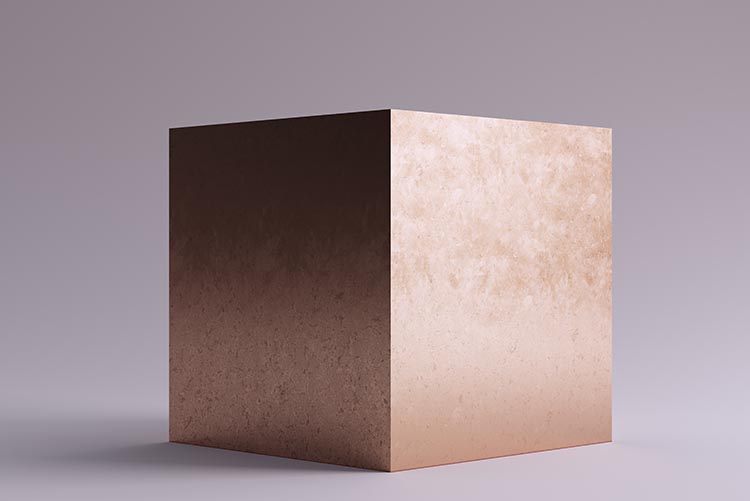
How To Use Two Point Perspective In Photography
One easy way to think about composing a photo using Two Point Perspective is that it’s about divergence.
One Point Perspective, where all parallel lines appear to head toward the same vanishing point, is about convergence. The subject is what’s being pointed at by the converging lines.
Many times for Two Point Perspective, however, you want to place your subject at the point where the lines diverge. Think of it as the difference between looking at an interior corner — One Point Perspective — and an exterior corner — Two Point Perspective.
Composing Using Two Point Perspective
The somewhat classic Two Point Perspective composition places the subject in the center and the foreground of the image. Think of a photo of a house with the camera facing an exterior corner.

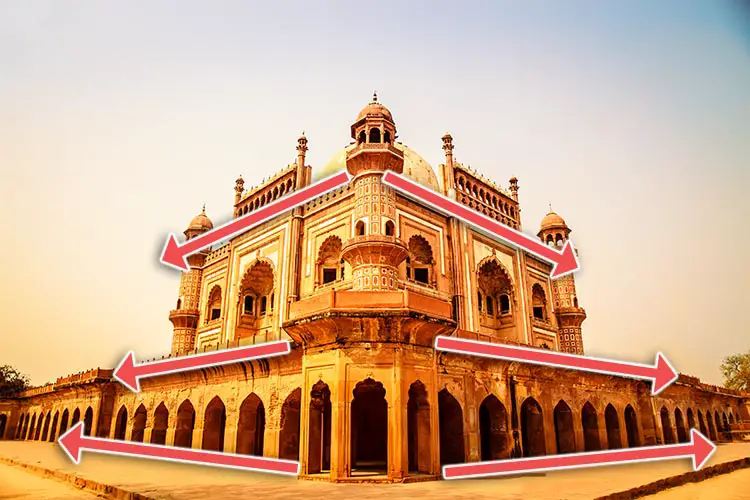
In this image, the fact that the line of arches recedes into the background in two directions emphasizes the size of the building behind. This is part of the power of Two Point Perspective in photography, as the lines give the viewer a constant visual path back to the main subject of the image.
You can offer a number of variations on this basic composition, using the distance from the camera, the scale difference between subject and surroundings as well as foreground and background elements.
That allows you to achieve different looks using the same basic techniques and compositions.
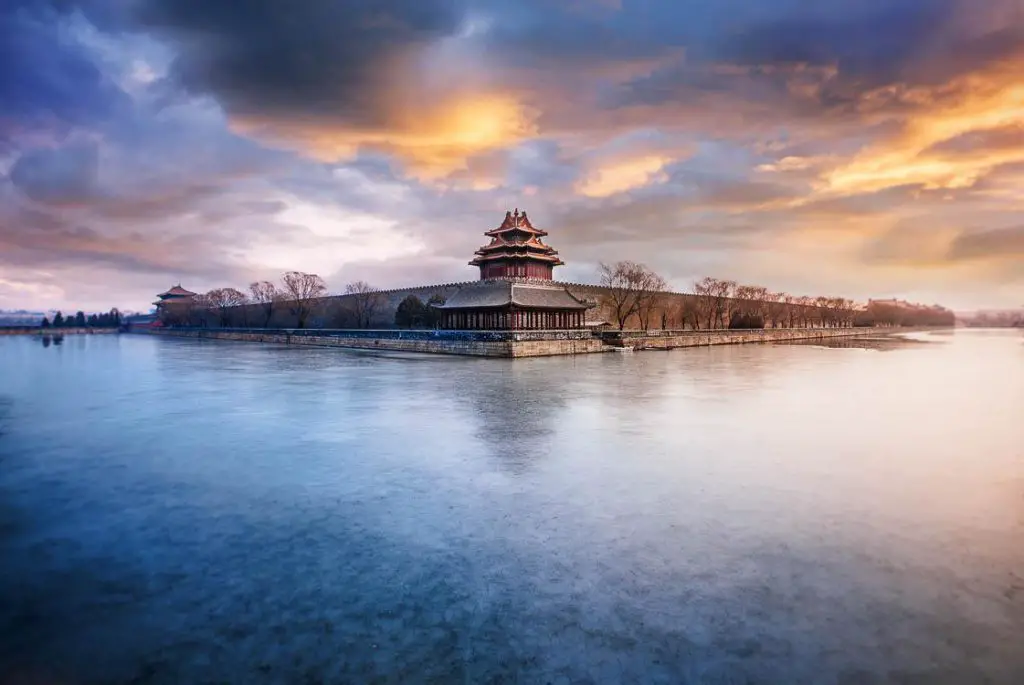
In this image, the subject is in the same basic position as the last, but the scale, distance and foreground all combine to give it a much different feeling. While the other photo gives a sense of stability and size, this one offers a sense of isolation and distance.
That should give you an idea of exactly how versatile this basic composition can be.
Variations Of Two Point Perspective Composition
Of course, that isn’t the only way to compose using Two Point Perspective, and you’ll definitely want to expand beyond just the one way of looking at things. In fact, once you start looking for opportunities to use Two Point Perspective, you might be surprised at how versatile it can be.
Using the way lines draw your eye to particular features can help you think of compositions that use Two Point Perspective.
While the classic composition for One Point Perspective uses a road or other track to draw the viewer’s eye to one spot, the same idea can work for Two Point Perspective, as well.
Find a subject that divides two roads, for example, and you can create a Two Point Perspective image that stands out.

One of the classic versions of that composition would center a building and use symmetrical roads to frame it, but as you can see, it can be done differently.
The photo above has a composition close to the classic rule of thirds, with the main subject off to one side.
That, along with the asymmetrical shape of the building and the differing angles of the roads, offer a different take on Two Point Perspective.
When To Use Two Point Perspective
Like so much in photography, when you should pick Two Point Perspective depends on what you’re trying to achieve. One Point Perspective generally features lines that lead inward, while Two Point Perspective generally features lines that lead outward.
That gives images that use Two Point Perspective a distinctly different feeling and balance than ones using One Point Perspective.
It works very well to capture both architecture photos and landscapes, making it a versatile option to master.

This photo works almost as a mix of one and two point perspective and shows how Two Point Perspective can take advantage of asymmetrical vanishing points.
Tilt-Shift Lenses And Two Point Perspective Photography
Tilt-shift lenses, also called perspective correction lenses, can be very helpful when shooting using One or Two Point Perspective. That’s because in both cases, part of the effect requires the image sensor to be parallel to one axis of the image.
For most images that use Two Point Perspective, you can do this yourself just by holding the camera correctly. But for some images, or if you want a particular look, a tilt-shift lens is needed.
What Is A Tilt-Shift Lens?
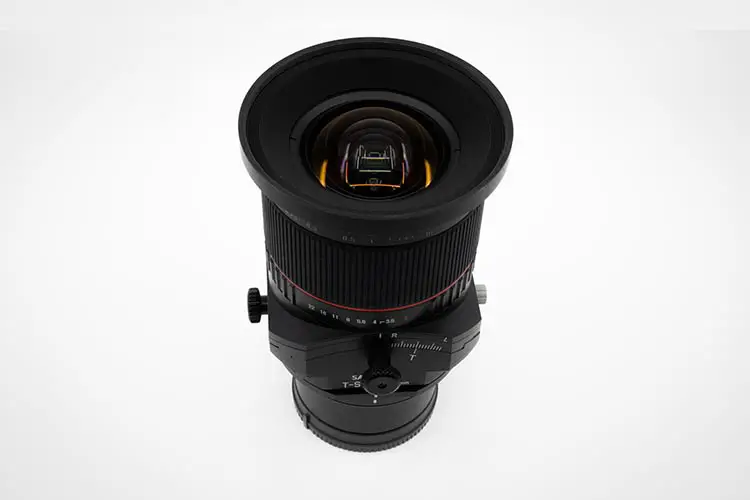
A tilt-shift or perspective correction lens allows you to change the position of the lens relative to the sensor. Originally, this was developed for 35mm cameras to mimic the effects of camera shifts on large and medium format.
Shifts, tilts and swings, whether on the camera or the lens, allow you to correct for perspective distortion. This makes them perfect for architectural photography, where reproducing shapes accurately is important.
Read More:

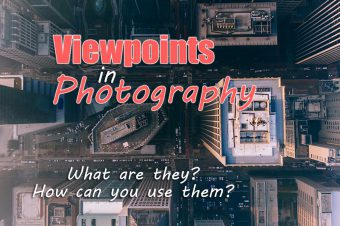




Leave a Reply